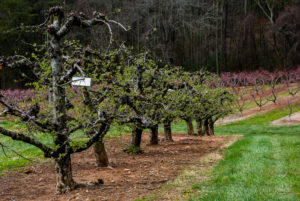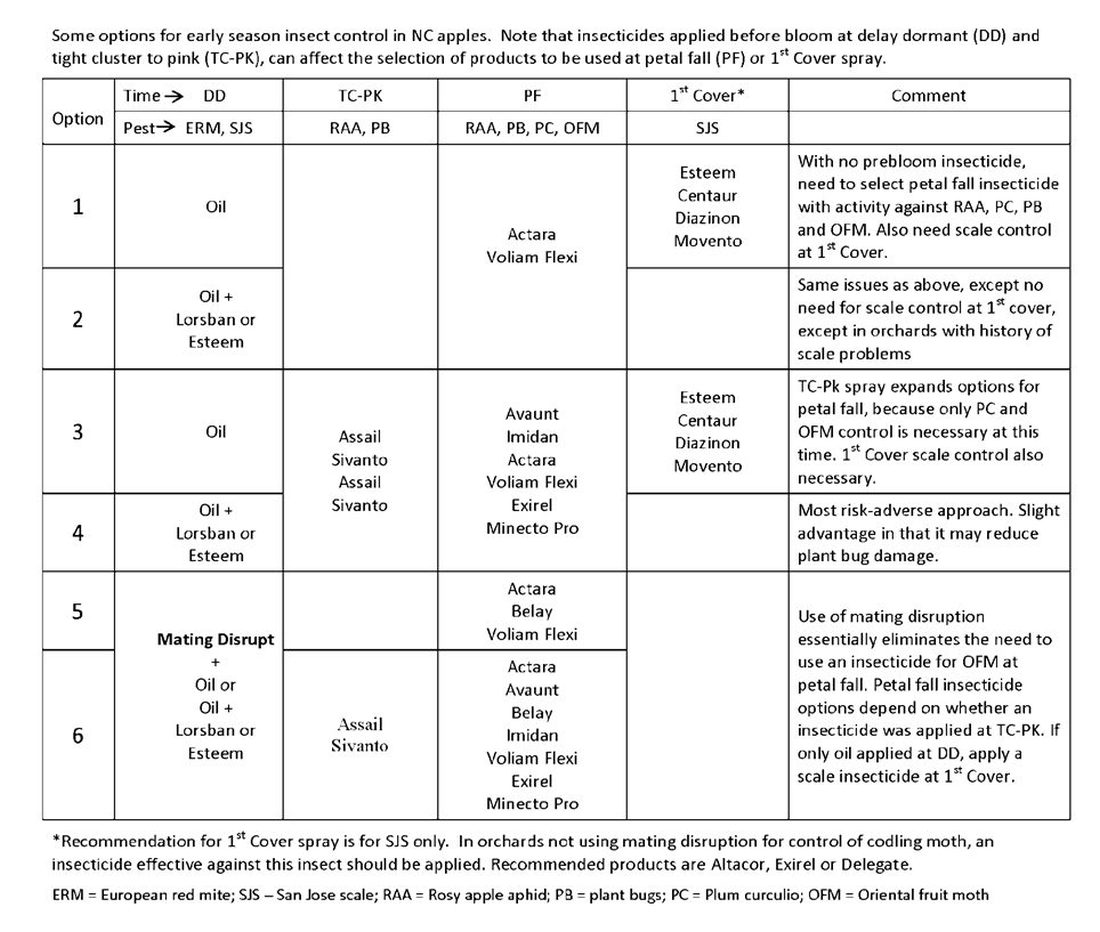Pre-Bloom Insecticide Options
go.ncsu.edu/readext?594636
en Español / em Português
El inglés es el idioma de control de esta página. En la medida en que haya algún conflicto entre la traducción al inglés y la traducción, el inglés prevalece.
Al hacer clic en el enlace de traducción se activa un servicio de traducción gratuito para convertir la página al español. Al igual que con cualquier traducción por Internet, la conversión no es sensible al contexto y puede que no traduzca el texto en su significado original. NC State Extension no garantiza la exactitud del texto traducido. Por favor, tenga en cuenta que algunas aplicaciones y/o servicios pueden no funcionar como se espera cuando se traducen.
Português
Inglês é o idioma de controle desta página. Na medida que haja algum conflito entre o texto original em Inglês e a tradução, o Inglês prevalece.
Ao clicar no link de tradução, um serviço gratuito de tradução será ativado para converter a página para o Português. Como em qualquer tradução pela internet, a conversão não é sensivel ao contexto e pode não ocorrer a tradução para o significado orginal. O serviço de Extensão da Carolina do Norte (NC State Extension) não garante a exatidão do texto traduzido. Por favor, observe que algumas funções ou serviços podem não funcionar como esperado após a tradução.
English
English is the controlling language of this page. To the extent there is any conflict between the English text and the translation, English controls.
Clicking on the translation link activates a free translation service to convert the page to Spanish. As with any Internet translation, the conversion is not context-sensitive and may not translate the text to its original meaning. NC State Extension does not guarantee the accuracy of the translated text. Please note that some applications and/or services may not function as expected when translated.
Collapse ▲ Prebloom is an important time for preventive management of several key insect and mite pests that can cause problems down the road. Among these are San Jose scale, European red mite, and rosy apple aphid. Oil applications at green tip are highly effective at suppressing overwintering scales and and ERM eggs, and can help to suppress populations later in the season. However, additional insecticide use is often necessary for season-long control of scale and sometimes mites. Below is a summary of the insecticide options from tight cluster to pink..
Prebloom is an important time for preventive management of several key insect and mite pests that can cause problems down the road. Among these are San Jose scale, European red mite, and rosy apple aphid. Oil applications at green tip are highly effective at suppressing overwintering scales and and ERM eggs, and can help to suppress populations later in the season. However, additional insecticide use is often necessary for season-long control of scale and sometimes mites. Below is a summary of the insecticide options from tight cluster to pink..
Lorsban 4E applied with oil has long been used for scale, but for resistance management purposes it is good rotate different insecticide strategies annually. In addition, some orchards treated with Lorsban pre-bloom have experienced scale problems in recent years. For these reasons, other insecticide options should be considered.
The two most effective scale products are Esteem and Centaur, which are both insect growth regulators, but have different modes of action. The window of application is fairly wide with both of these products ranging from green tip to first cover. Applications before bloom are targeting overwintering immatures and recently developed adult scales, while applications after bloom target first generation crawlers that emerge shortly after first cover (see figure below).
Movento is another insecticide that will control scale, but it should be applied between petal fall and first cover, when sufficient leaf tissue is present for this systemic insecticide to be taken up. It must be applied with a spreading and penetrating adjuvant for effective leaf uptake. Because of the systemic activity of this product, it will also control woolly apple aphid, a pest of sporadic occurrence.
Rosy Apple Aphid is another insect that can be controlled with insecticides applied at either the pink or petal fall stage. Nymphs begin to hatch at pink, and they remain susceptible to exposure of insecticide applications through petal fall. RAA-induced leaf curl begins at first or second cover, after which they become difficult to control. Most neonicotinoids are effective against RAA, but be sure that blooms have fallen from trees and bees are not in the orchard when spraying.




